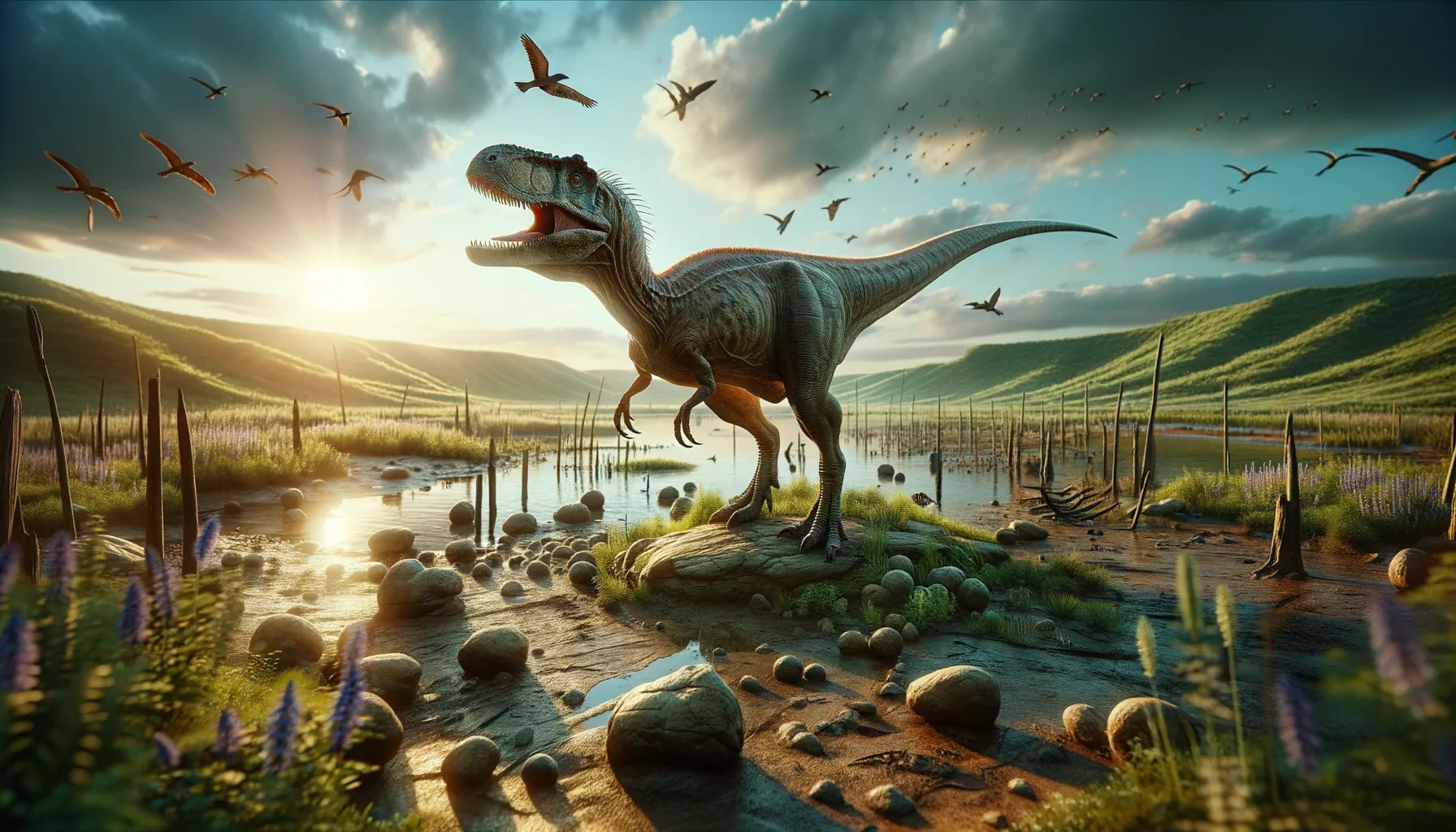
Iliosuchus
Ancient ancestor of bird evolution.
Period
Jurassic
Length
About 2 meters long.
Height
Roughly 1 meter at the hip.
Weight
Approximately 50 kilograms.
Iliosuchus was a small theropod dinosaur from the Middle Jurassic period. Known for its moderate size, it was an agile predator, possibly preying on small animals and insects. Its fossils have mainly been found in England, providing insights into the early theropod evolution that eventually led to modern birds. Iliosuchus highlights the diversity of dinosaur species during the Jurassic, offering a glimpse of life's past complexity and adaptability.
Diet
Iliosuchus likely had a carnivorous diet, feeding on small animals and insects. Its sharp teeth and agile movements suggest it was adapted for catching prey efficiently.
Hunting
As a small theropod, Iliosuchus likely relied on stealth and agility to ambush prey. It may have hunted alone, utilizing its speed to chase down quick-moving small animals.
Environmental challenges
Iliosuchus faced environmental challenges such as finding enough food in its habitat, competing with other small predators. Climate fluctuations during the Jurassic may have impacted its prey availability. Additionally, it had to evade larger predators and navigate the changing landscapes of its time.
Speed
Moderate, agile for its size.
Lifespan
Estimated at around 10 to 20 years.
First discovery
First discovered in the 1930s in England.
Fun Facts
- Iliosuchus was a small theropod dinosaur that lived during the Middle Jurassic period, around 170 million years ago.
- Its name means 'flesh crocodile', reflecting its sharp teeth and predatory nature.
- Iliosuchus was discovered in England, specifically in the Oxfordshire region, providing insight into European dinosaur life during the Jurassic.
- This dinosaur was relatively small, estimated to be around 2 to 3 meters long, making it more agile than some of its larger cousins.
- Iliosuchus’ fossil remains primarily consist of partial skull and vertebrae fragments, making complete reconstructions challenging.
- The Iliosuchus is part of the theropod group, which eventually gave rise to modern birds.
- Despite being less known, Iliosuchus is important for understanding the evolution of theropods during the Jurassic period.
Growth and Development
Iliosuchus, like many theropods, likely grew rapidly to reach maturity quickly. Juveniles had to be adept at avoiding predators while learning hunting skills. As it matured, changes in body proportions may have occurred, strengthening its hunting capabilities.
Habitat
Iliosuchus inhabited dense forest areas and open plains that provided ample hiding spots and hunting grounds. It thrived in temperate climates with a variety of small animals to prey upon. Access to water sources was also crucial for its survival.
Interaction with other species
Iliosuchus shared its environment with various herbivorous and carnivorous dinosaurs. It might have engaged in competition with other small theropods for food. Larger predators posed a consistent threat, while herbivores likely influenced its habitat structure.
Natural lifespan
Iliosuchus had a natural lifespan estimated at 10 to 20 years.
Reproduction
Iliosuchus likely laid eggs, similar to modern birds and other theropods. Nesting sites would have been hidden to protect from predators. Parental care might have been present, with adults protecting nests and possibly feeding young hatchlings.
Social behaviour
Iliosuchus may have been a solitary hunter, though some level of social interaction can't be ruled out completely. It possibly communicated through vocalizations or visual displays, particularly during mating season.
Fossil locations
Iliosuchus fossils have primarily been found in England, particularly in regions known for rich Jurassic deposits. These findings help piece together its ecological role during the period. Fossils primarily include partial skeletal remains like bones and teeth.
